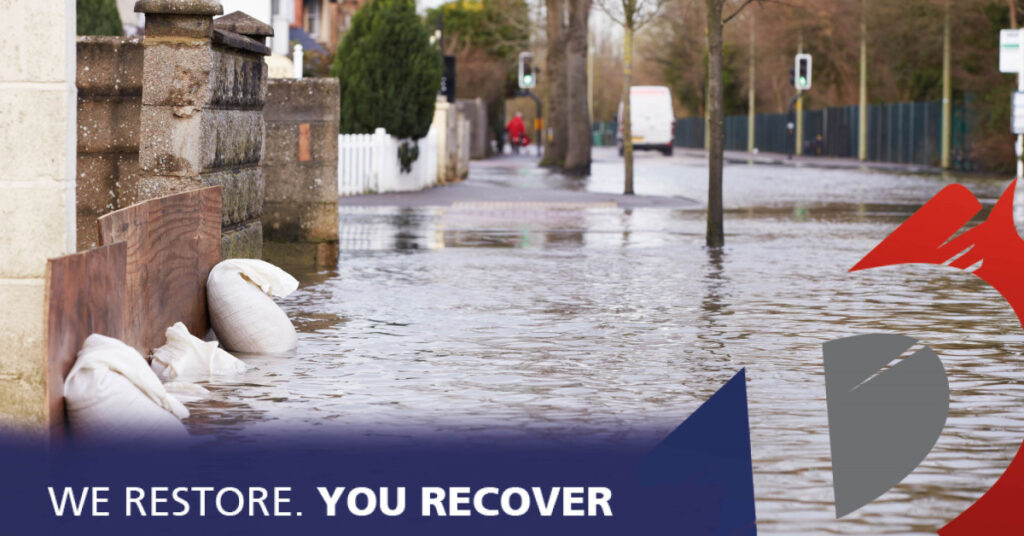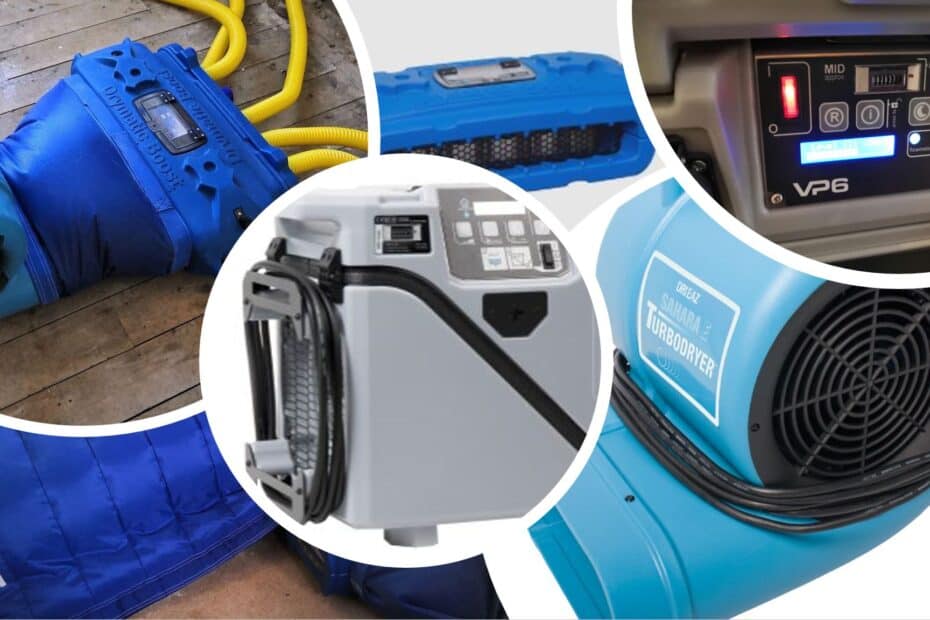Professional Water Damage Restoration and Disaster Restoration is a very varied industry and covers many different things and at various scales of damage, all the way from a small water leak, through to a major leak and even flooded properties.
As you might expect, each project is different depending on the type of water damage, the size, age and structure / construction of the property (buildings and contents), the location, the rooms affected and even the time of year that the water damage occurred – drying a property in winter is very different to drying in summer. A bit like drying your clothes would be!
A common type of water damage restoration is dealing with damp on walls or also damp on ceilings which can come from a water leak (causing ceiling water damage), condensation problems and rising or penetrating damp causes.
Water Damage Repair
This can include many of the following:
- Administration & Management – managing the project, start to finish
- Risk Assessment – always, always the first step onsite!
- Making the site safe – based on the the risk assessment, including…
- Electrical Safety – checking and repairing electrics affected by water
- Photography – recording the damage to the property for our records
- Assessing the scale of Water Damage – what has been affected and how
- Moisture mapping – seeing where moisture has travelled the extent
- Scoping out the work – the steps to getting the property restored
- Sanitisation – antimicrobial treatments to remove bacteria, and…
- Odour Control – to manage smells, especially if sewerage is involved
- Specialist Cleaning – removal of dirt and debris from the areas affected
- Contents listing – listing items damaged ‘Beyond Economic Repair’ (BER)
- Contents Removal – to (a) prevent damage and (b) make room for work
- Storage of Contents – taking contents offsite for safe storage during work
- Stripping Out – removing parts of the structure affected beyond repair
- Removal of Waste – loading items mentioned above for disposal offsite
- Pumping or extracting water – removing residual water ahead of drying
- Installing drying equipment – to help get moisture levels back to normal
- Monitoring – regular moisture readings to see how the property is drying
- Reporting – providing reports at stages of the process for parties involved
- Hand over Certification – to confirm the property is stabilised to normal
- Returning Contents – bringing items stored offsite back to the property
- Reinstatement – reconstruction work back to pre-incident condition
- Redecoration – on the back of reinstatement, decorated repaired areas
- Project Wrap-up – concluding the process and updating all involved
We provide this water damage restoration service to domestic and commercial customers, who are naturally concerned with business interruption insurance claims. Our process helps support this.

So as you can see, the simple phrase of ‘Water Damage Restoration’ involves a lot of steps which explains why it is a specialist professional service from start to finish! We have another page dedicated to explaining our other water damage repair services too.
Of the steps above which people often ask about is ‘installing drying equipment’ and, in turn people are interested in professional drying equipment. So lets discuss….
Industrial Dehumidifiers
Dehumidifiers are just one of the pieces of equipment and tools to dry properties in the water damage restoration industry, but what are the types of industrial dehumidifiers that are used?
First of all it is important to distinguish between professional dehumidifiers used in water damage restoration vs one that you can buy online or a DIY store small dehumidifier. Industrial dehumidifiers are designed for professional moisture extraction in a swift, measured and efficient way with many more features than a cheap dehumidifier.
Importantly, water damage restoration is more than just using a dehumidifier to dry a property, and ever that part alone is done with sophisticated monitoring using professional moisture meters and other accompanying equipment.

There are two main types of dehumidifier used in water damage restoration:
Refrigerant Dehumidifiers
As the name says, these dehumidifiers use refrigerants, typically to cool down coils or radiators to a cold temperature. Moisture laden air, with an elevated Relative Humidity (RH) passes over this surface causing the moisture to condense as the surface is lower than the air’s dew point. This water is collected into a tank via a drip tray and, most often, automatically pumped away periodically, typically into a sink or drain. Refrigerant dehumidifiers work well in warmer room temperature ranges, they are less efficient in the cold.
If they are used in colder conditions, they are often accompanied by industrial heaters and air movers which help the process of drawing out water. Just like how clothes dry on a washing line better in warmer weather compared to cold!
This compares to…
Desiccant Dehumidifiers
Desiccant is a hygroscopic material that attracts and holds water. A common example of this that people would see in day to day life is silica gel that is used in packaging of materials / electronics that are sensitive to moisture to keep them dry – the packages absorb moisture keeping it away from the product, protecting it. Something that is ‘desiccated’ is dried (moisture reduced or removed) – think desiccated coconuts!
For those interested, there is an interesting article on desiccant on Wikipedia and we have written our own informative guide to desiccant dehumidifiers.
Anyway, how do desiccant dehumidifiers work? As you might expect, desiccant dehumidifiers contain desiccant within them. Typically they have a rotating desiccant wheel (such as silica) with perforation / air holes in them. The moist air passes over the wheel and the moisture is attracted to and retained by the wheel. This wheel then rotates, to another part of the desiccant dehumidifier where it is heated, releasing the moisture into the air in that part of the machine, this moist air is vented out of the property. Over time, the moisture is removed from the air and materials in the property.
Desiccant dehumidifiers work well in colder months vs refrigerants. We have an article about silica gel which is similar to the desiccant found in these dehumidifiers.
Drying a Property
One of the things that a professional water damage restoration technician will do is ensure that a property is not over-dried. This is critical, their aim is to get moisture back to normal, pre-incident, stabilised levels. Over drying can cause structural issues, such as cracking, movement and shrinkage, especially in materials sensitive to that – e.g. wood including furniture.
On the subject of drying for water damage restoration, you may be interested in our article about if fans cool you in summer, where we explain the pros and cons – including cooling fan running costs.
Rainbow Restoration (who used to be known as Rainbow International) are experts in water damage management restoration, including after water leaks and even flooded houses. Many people who only do leak detection would not offer this service as an extra but Rainbow are able to if you are interested.
So if you are looking for water damage restoration services near you, get in touch with us today. We work with local loss adjusters to provide our services too, if needed.

On the interesting subject of water damage restoration, something that can help to prevent damage when you have an active water leak is isolation valves, which can stop water at a localised level. We also discuss water damage restoration in our new calculator for when you have Boiler Pressure Low
Is water damage covered by home insurance?
Water damage restoration is very commonly covered by home insurance, in fact it is one of the most common insurance claims that we deal with. We can help guide you through this process, including trace and access cover claims and work with your insurance company if needed, including providing reports for them.
How bad is water damage to a house?
This can depend on a lot of things such as the amount of water the property is exposed to, the type of water and the construction of the property. We will ensure the best method is selected to get your property back to normal and monitor progress along the way taking thorough damp meter readings.
